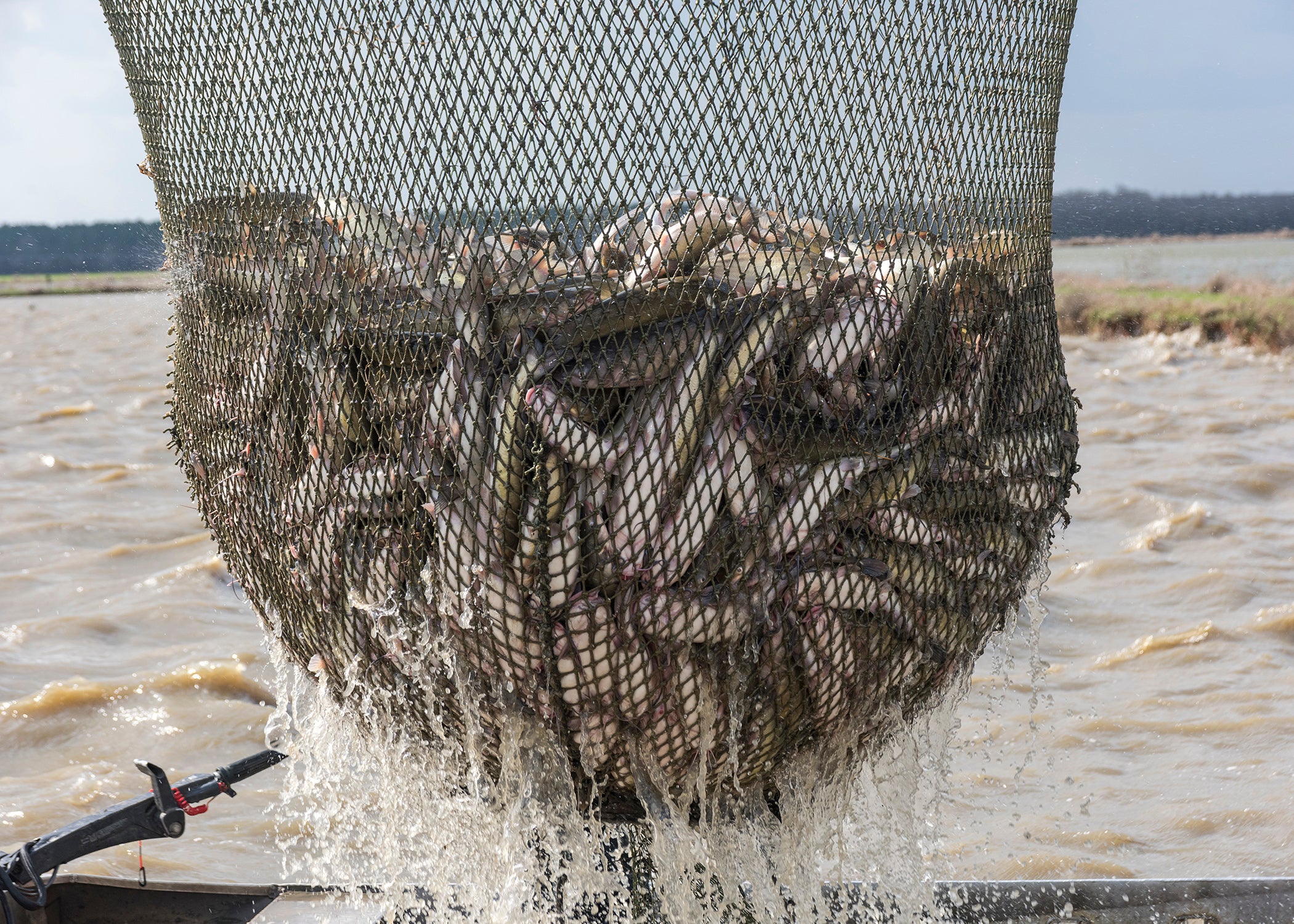Feed prices affecting consumer catfish prices
Published 11:40 am Monday, August 14, 2023

- A batch of live catfish is caught in a net at Philip Good Farms in Noxubee County in February 2023. (Photo by MSU Extension Service/Kevin Hudson)
By Nathan Gregory
MSU Extension Service
As long as feeding catfish stays pricey, anticipate paying more for fillets at the grocery.
“High grain prices in recent years have pushed catfish feed prices to $495 to $525 per ton, depending on protein level,” said Jimmy Avery, Mississippi State University Extension Service aquaculture professor at the Delta Research and Extension Center in Stoneville. Five-year averages for 32 percent protein feed hovered in the $375-to-$420-per-ton range between 2017 and 2021.
“Scanner data results show a high price differential between U.S. catfish fillets and Vietnamese swai fillets,” said Ganesh Kumar, MSU aquaculture economist in Stoneville with the Mississippi Agricultural and Forestry Experiment Station. “Smaller U.S. catfish packs are more appealing to grocery customers. Although the market share for U.S. catfish is high in grocery stores, Vietnamese swai is having a higher market share in away-from-home consumption outlets.”
Frozen Vietnamese swai fillets are sold in retail markets for about a 38 percent to 55 percent lower price than U.S. catfish frozen fillets.
“This high price differential also happens at the wholesale and distributor levels,” Kumar said. “Vietnam’s lower cost of production is what drives this price.”
Part of what keeps domestic catfish production more costly than swai is heightened catfish safety inspection requirements from the U.S. Department of Agriculture. Each of Mississippi’s eight catfish processing plants is federally inspected.
“In 2022, the U.S. processed 322 million pounds of food fish,” said Josh Maples, MSU Extension agricultural economist. “Despite the consistent demand, live fish prices are down roughly 10 cents per pound compared to the same period last year.”
Avery said fingerling suppliers are reluctant to produce large numbers of fingerlings because food fish producers tend to stock fewer fingerlings in unfavorable price conditions.
“Food fish producers are reluctant to inventory fish in ponds past their optimum market size,” he said. “They fear the high-input-cost feed it took to grow the fish will not be recovered if fish must be sold later at lower live fish prices.”
Another risk is the added cost the producer absorbs if the fish grow too large. Bigger fish are tougher to process and less appealing to buyers.
“Large fillets are expensive to process due to having to use separate processing lines and more hand processing,” Avery said. “The industry has struggled in developing markets for this product. Consumers simply prefer the 3- to 5-ounce fillets. Although there are several reasons for increased numbers of large fish, size variation at stocking and delays in harvest are two contributing factors.”
With 33,100 water acres, Mississippi produces more than half of the farm-raised catfish in the U.S. The nationwide total in 2022 was 55,855 acres.





